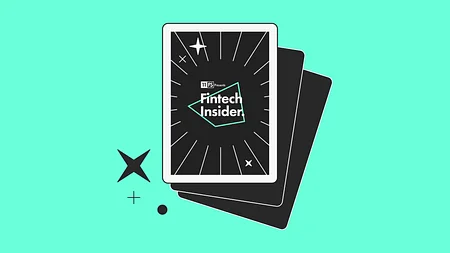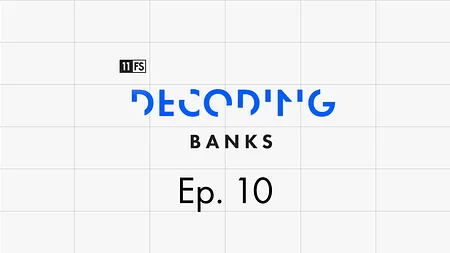Marcus and Me: Boe Hartman on building a new philosophy at an incumbent bank

You may have heard of Marcus, it’s been kind of a big deal. But why and how? We recently sat down with Boe Hartman, CTO at Marcus by Goldman Sachs, to get the inside story.
Disclaimer: we’re big fans of Marcus by Goldman Sachs. You may have heard our Head of Research, Sarah Kocianski, wax lyrical about it on Episode 257 of Fintech Insider, “My love affair with Marcus”.
But look, you don’t have to take our word for it. The numbers tell the story: more than $5 billion in loan balances, more than $50 billion in deposits and 4 million customers. In the UK there are plenty of digital savings products, so it was suggested it would be tougher to break. Well, as of May this year it had gained 250,000 customers and taken more than $8 billion in deposits in the UK, less than eight months after launch.
So you can’t innovate within an incumbent? Try telling that to Boe Hartman, the self effacing, CTO of Marcus by Goldman Sachs who, per his Twitter bio, is a fully-qualified “Tech nerd” and “curious problem solver.”
Boe jokes that his younger self would would likely be perplexed that he not only entered banking, of all things, but stayed there. His career that’s seen him go from Capital One, Barclaycard and now Goldman Sachs, is down to two factors. First, he admits timing has played a part, being at Capital One during “the golden years” where they were inventing new things for the credit card market. The second reason is more personal, in every sense.
How (and why) they built it
The Marcus project started where so many do: research. But in interviewing 10,00 people to understand what potential customer might want in a service, in Boe’s words they didn’t find “a business case; we found a purpose, which is what surprised me the most.”
The purpose? People had a feeling of dread and shame about their finances.
So what is the Marcus secret sauce? Hartman offers a single word of advice of how it made it happen, one you don’t often hear uttered by a 150 year-old bank. From design and product, through to how they tackled customer onboarding and even how the terms and conditions were communicated: “Simplicity.”
Marcus' growth in a crowded UK market is impressive as, unlike many challengers and incumbents, it’s sole offering - at least at launch - was a savings account. And it doesn’t even have an app.
Starting with a consumer loan product, before extending to high-yield savings and money management tools, Marcus is being held as ‘the’ case study for incumbents to now follow.
Earlier this year, the 11:FS Pulse team awarded it Best Incumbent Strategy in the 2019 Pulse Awards, noting:
“The product is incredibly well thought out, offering highly attractive rates, a new brand powered by an aspirational one, and most importantly, seriously effective execution...shown by Marcus’ scores in Pulse, which are high across the board but particularly when it comes to usability and visual design where it achieved full marks in several areas. Across onboarding, viewing transactions, accessing statements, and adding and withdrawing money Marcus is intuitive and simple to use."
However, it’s one thing to draw an architecture on a whiteboard. Getting it to market another, making it such a success, a whole other challenge. In Boe’s view that success can be attributed to a specific mindset.
He also readily admits that with Marcus he had the benefit of no technical, organisational or product debt. That meant he could build the team he wanted, with the architecture he wanted. And it’s worked. The first line of code was written on November 17, 2015, the first customer was booked on October 17, 2016. Since then it’s been one hell of a journey.
The focus on culture
While the offering is impressive, Boe was also determined to create an organisation that gave people the opportunity to grow, stretch and learn. That also meant that was word about Marcus got out, and the product was launched, team members were headhunted by competitors.
That seems counterintuitive to so much perceived thinking - build a great team, build and launch a successful service. Then lose the people who made it happen?
It attracts the best people, he says. “You get a headline - if you go on this journey, you will learn new skills and then you’ll be valuable. Other managers will recognise that and send people to you ‘hey this person needs a new stage’, so it becomes a virtuous cycle if you’re open to it.”
The other part of this is the type of candidate Boe looks for and his mantra that curiosity is a superpower.
That curiosity is taking Boe in a new direction. He’s leaving Marcus to take on a broader digital role within Goldman Sachs and that means learning about the rest of the bank; from its global investment banking and securities to investment and asset management.
In his own words the consumer banking guy get to “become a student again.”
To hear more of Sam in conversation with Boe, more about Marcus and why they both view Anthony Bourdain as a hero, download Episode 354 on your podcast player, or take a listen here.
As a bonus, we also have Omer Ismail discussing Goldman’s long-term strategy for Marcus from Money 20/20 in Las Vegas last year.


